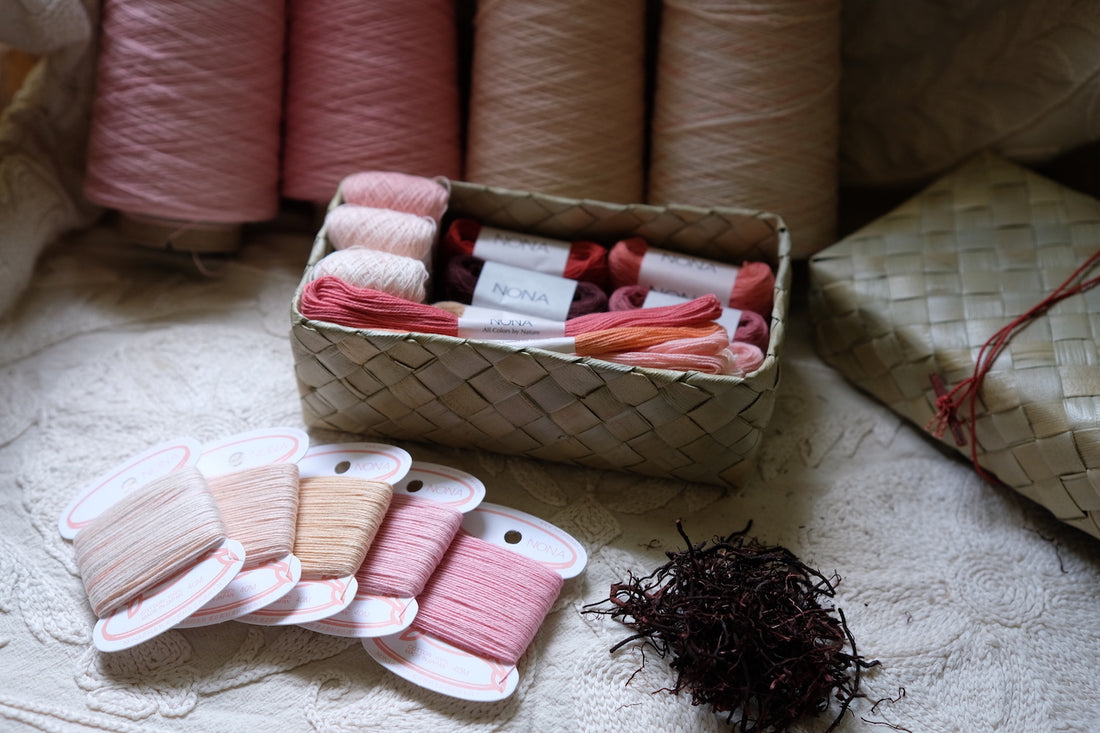To commemorate NONA's 2nd anniversary, we will start selling 2023AKANE Tsuzura .
NONA's symbol plant, Akane. I love the fact that the roots provide color. NONA's desire to manufacture products with firm roots in the earth is reflected in this product.
2023AKANE Tsuzura. NONA yarn is packed with NONA yarn dyed with Japanese madder and Indian madder, NONA thin yarn, and NONA card yarn. Japanese Akane has especially expanded its range of colors since last year, resulting in lovely colors. Sales are scheduled to start in stores from 11:00 am on Friday, May 19th, and at the NONA online shop from 8:00 pm on May 19th. The number is limited and will end once sold out. There will be no resale.
2023AKANE Tsuzura
sales schedule
SHOP Friday, May 19th from 11am
ONLINE SHOP Friday , May 19th from 20:00




Click here for last year's blog about Akane Japan. Please have a look at this.
This year, by good fortune, I was able to obtain Japanese Akane from Manyoso Farm in Gunma. You mentioned that it might have a strong yellow tint because it is a first-year-old Akane, but I am only in my second year of working with Japanese Akane, so I have never dyed Japanese Akane that is several years old, so I can't really tell the difference. did.
I asked various people about dyeing methods and how to achieve colors, and tried them out in my own way. As you can see in the photo, Japanese Akane has very thin roots and looks like hijiki when dried. It has a unique scent similar to Chinese medicine or medicinal herbs.
I think Japanese madder is a very difficult material when it comes to dyes.
If I were to describe it in one word, it would be ``no color.''
She's a very kind person...
"Layering thinly" was a keyword that came up many times in Kyoto, and I wasn't sure what it meant, but after dyeing it, I understood.
The only way to make it darker is by layering thinner layers.
There are many vegetable dyes and vegetable dyes that can easily produce color, but Japanese madder is very ``irritating'' and does not show its color easily. At first, it will be an orange-like color with a lot of yellow. After endless work, I completely fell in love with Japanese Akane dyeing when it turned out to be a lovely pink color, more like safflower than red.
I love cute colors...it's easy for me! !
Overlapping, overlapping. It took a lot of time and effort.
Japanese Akane has such a color and is dyed with plants, and even though it takes time, I'm actually happy because I'm soothed by the process. I want to dye it forever and see the possibilities of Japanese Akane...
As NONA celebrates its 2nd anniversary, I am fascinated by Japanese madder dyeing, which seems to have returned to its roots.
I learned at the ``Japanese Akane Tradition Project'' held the other day in Kyoto that the Japanese Akane Akane cultivation activities of Miyama Sokisha in Kyoto, which I have been working with for a long time, are connected to activities to preserve Japan's historic farmland. Since then, I feel like I've found a new meaning in our vegetable dyeing.
Japanese Akane is also a very unassuming plant, but it grows naturally in Japan.
Nihon Akane, a second-year student with NONA, is also growing in our small garden. The leaves are heart-shaped and really cute.
On this memorable occasion of our 2nd anniversary, I would like to once again express my gratitude to Manyoso Farm for being able to successfully dye with Japanese Akane again this year.
Manyoso Farm
Beautiful mountain garden

